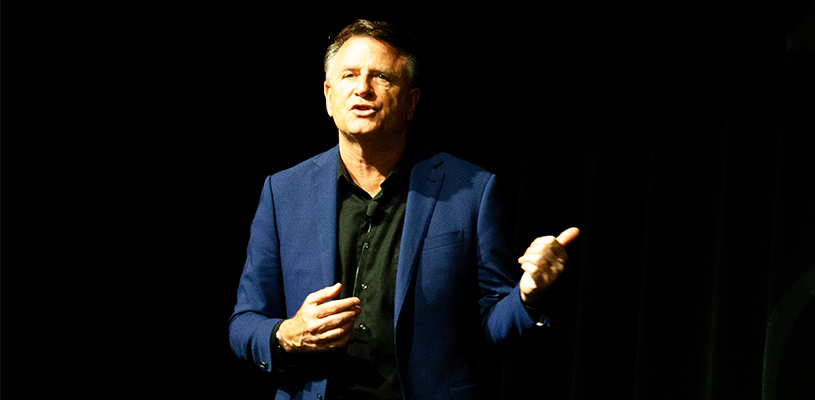7 steps to social media success

Most municipalities have one or more social media pages and all municipalities face mounting pressure to use them to communicate. Many choose to hire or delegate one staff person with social media responsibilities.
To fully harness the power of social media, however, a municipality must help create an online community that fosters trust with citizens. This requires more than one person. In fact, every municipal program and department should be involved. Outlined below are seven steps to creating an effective approach to social media.
1. Add a Little Bit of #inspiration
It might sound scary to place your brand in the hands of staff throughout your municipality, but let’s be honest – most of us know how to use social media because we do it every day. Municipal workers are already using social media to communicate with their kids, to stay in touch with their friends, and to share funny memes with each other. Why not harness those skills to improve your municipality’s online presence?
2. Loosen the Reins
Administrator privileges allow social media users to add content and respond to citizens. Empowering staff from each department with social media administrator privileges removes barriers and promotes a more efficient process. It allows staff with more knowledge about an area to answer questions. It reduces the delays in response that occur when there is only one administrator – and responding quickly leads to greater satisfaction and trust.
That being said, it is important for all users to take social media training and to meet regularly as a group to share best practices and work toward a more cohesive social media strategy.
3. Stick with One Page per Platform
While it may be tempting to leave departments to wrestle with social media individually, the municipality will miss out on the benefits of a single, robust, and dynamic municipal page.
Sharing posts on one generic page allows a municipality to educate a large group of citizens on a variety of issues. Staff are often concerned that criticism is more likely to occur on a general municipal page. At first, staff may feel overwhelmed by “trolling” – highly critical comments meant to deter discussion. Have patience. With a little time and effort, a community will begin to form that will help moderate the page by itself.
4. Schedule Posts
Most problems that occur from multiple administrators posting on social media can be resolved with scheduled posts.
Scheduling also allows the social media coordinator to ensure posts have a consistent look and are written in a consistent voice. Making changes to scheduled posts is easy and can be done using scheduling software. Some platforms have their own scheduling feature, and there are several fee-based options that allow users to schedule posts on multiple social media platforms.
5. Craft a Social Media Policy
A simple policy can be helpful to define roles and responsibilities for municipal social media pages.
A social media policy should empower social media administrators by clarifying responsibilities and procedures. If staff are not sure who they need approval from, or how long in advance they need to schedule a post, they will be bogged down by procedural questions and your social media presence may never get off the ground.
6. Train Strategically
When it comes to training, one size does not fit all. Managers will benefit more from strategic training, whereas training for frontline staff should be more technical.
Strategic social media training should focus on who follows social media accounts and how to reach more users. Surveying your residents can help illustrate the potential of social media.
Social media training is also essential for department heads. Although they may not be directly involved, they must have enough knowledge to be able to confidently approve engaging social media content. By training users across the organization on the same topics, they will be empowered to respond consistently.
7. Create a “Troll” Policy
A “troll” is an online user that deliberately tries to upset other users in order to provoke a response. Because of the perceived anonymity of social media, users may be more likely to behave inappropriately online than they would in person. A municipality should be prepared to remove abusive comments, as well as to respond to the occasional user who has a pattern of inappropriate behaviour – the “troll.”
A “Terms of Use” policy should be clearly posted and transparent for all users and administrators to see, helping to ensure that conversations remain a positive experience for everyone involved.
Social Media is Here to Stay
As “fake news” and inaccuracies tend to proliferate on social media, municipalities should tackle the matter head on by establishing a social media presence that is a reliable source of up-to-date information. While the effort and investment may seem substantial at first, it is well worth the benefits of improving trust with citizens and establishing another effective channel of communication. MW
A version of this article was published in Municipal World, April 2019
✯ Municipal World Insider and Executive Members: You might also be interested in the full version of this article or in Leigh Carter’s article: Politicians & social media: A marriage made in heaven or … Note that you can now access the complete collection of past articles (and more) from your membership dashboard.
James Jenkins is the Deputy Clerk for the City of Sarnia.
Katarina Ovens is the Communications Coordinator for the City of Sarnia.
James and Katarina led the development of the city’s Communications and Engagement Strategy, which includes policies for social media, media relations, and public engagement.
Related resource materials:



